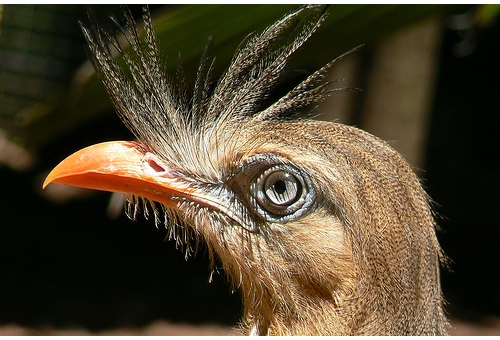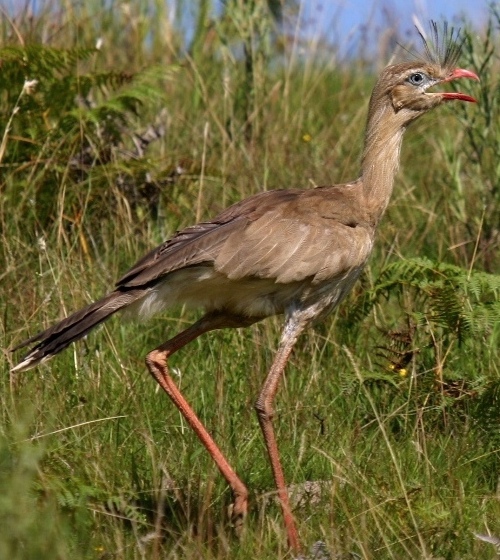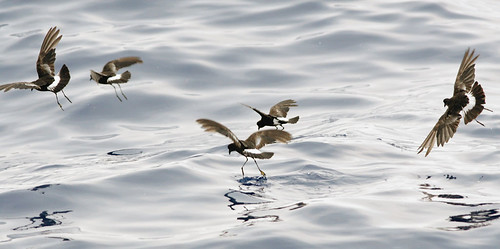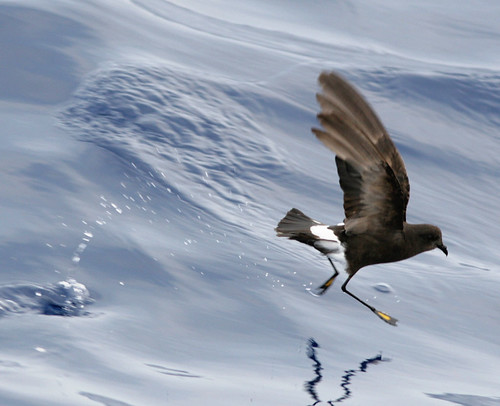Still on the dinosaur thing, because it is genuinely fascinating, I think. Yesterday I picked a bird that looked like a bit like a dinosaur to illustrate the point, but of course they’re all evolved from dinosaurs, even ones like the Long-tailed Tit, or this Green-tailed Sunbird:
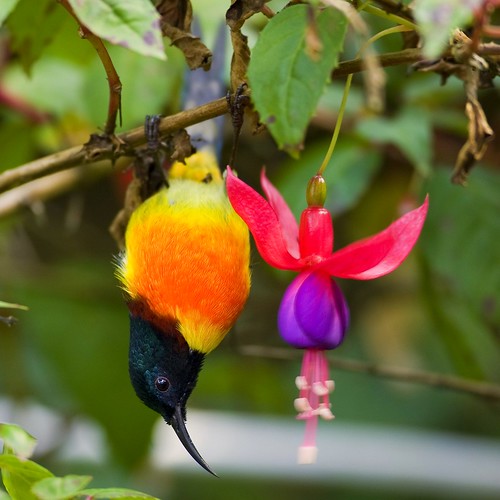
And it’s not a distant relationship, in evolutionary terms; birds fit right into the middle of the family tree of dinosaurs. Here’s something I just learnt from Wikipedia, which I don’t think I’d appreciated before: Velociraptor, the predatory dinosaur made famous by Steven Spielberg, had feathers. Indeed it had stiff, quilled ‘wing feathers’ on its arms, although it didn’t use them for flight. It had hollow bones. It brooded its eggs. Some of the smaller species in the same family probably used their feathers for gliding.
However, the other scary predatory dinosaur in Jurassic Park, the Tyrannosaurus rex, did not have these kind of quilled feathers. Which means that Velociraptor shares a common ancestor with modern birds which it does not share with T rex. Velociraptor is more closely related to the Green-tailed Sunbird than it is to Tyrannosaurus.
And Tyrannosaurus, in turn, shares a common ancestor with the sunbird which it does not share with Iguanadon, or Stegosaurus, or Diplodocus.
It’s an extraordinary thought.
» I didn’t want to get too sidetracked because the details are complicated and I’m only getting most of this stuff from Wikipedia myself, but just a couple of pedantic points. Firstly, the velociraptors in the film are much too big, apparently, although there is a larger related species called Deinonychus which is the right sort of size. The real Velociraptor was about turkey sized. Still too big to glide though.
And secondly: it’s true that T rex did not have quilled feathers. But apparently, some of the smaller tyrannosaurids do show signs of having had primitive, downy feathers for insulation. It may be that the only reason T rex doesn’t have these is that it is too big to need insulation, and like elephants, rhinos and hippos, it has lost it. Or maybe the hatchlings were downy but they grew out of it.
Wikipedia has an article about feathered dinosaurs. The whole business is mind-boggling, in the best possible way.
Photo credit: Green-tailed Sunbird (male) – Aethopyga nipalensis is © Mike (NO captive birds) in Thailand and used under the CC by-nc-nd licence.
